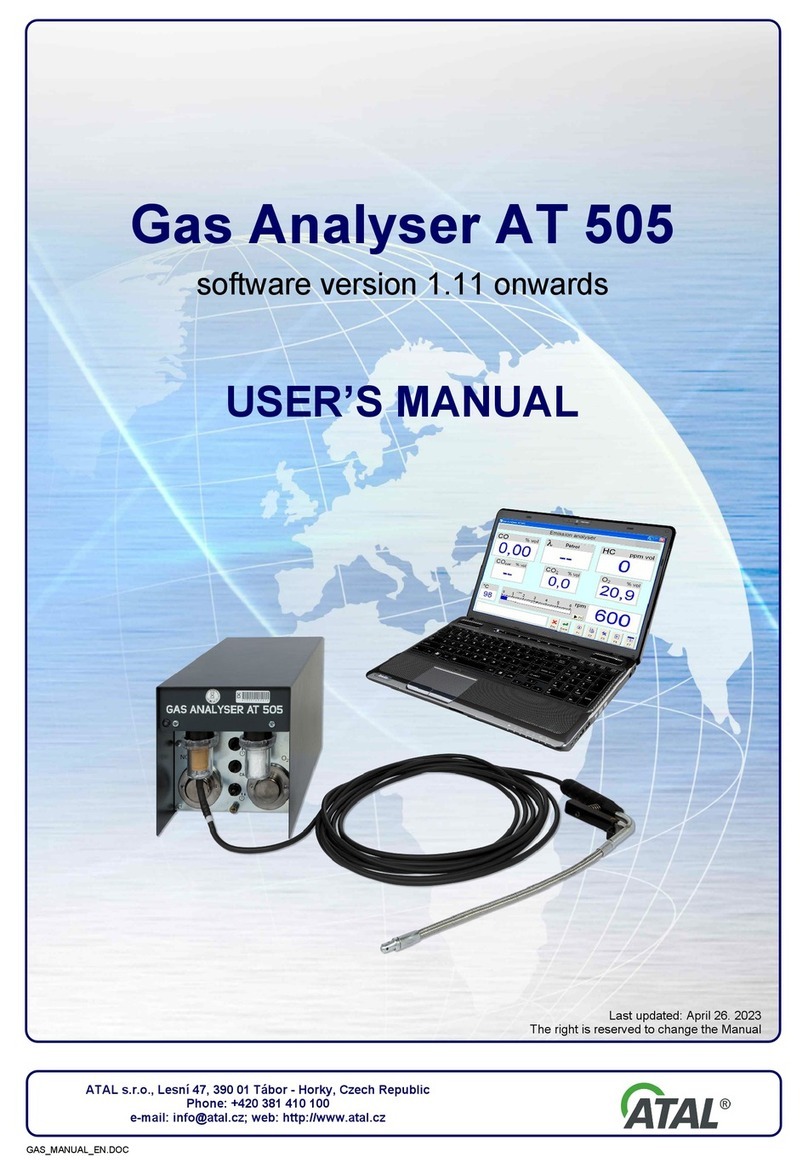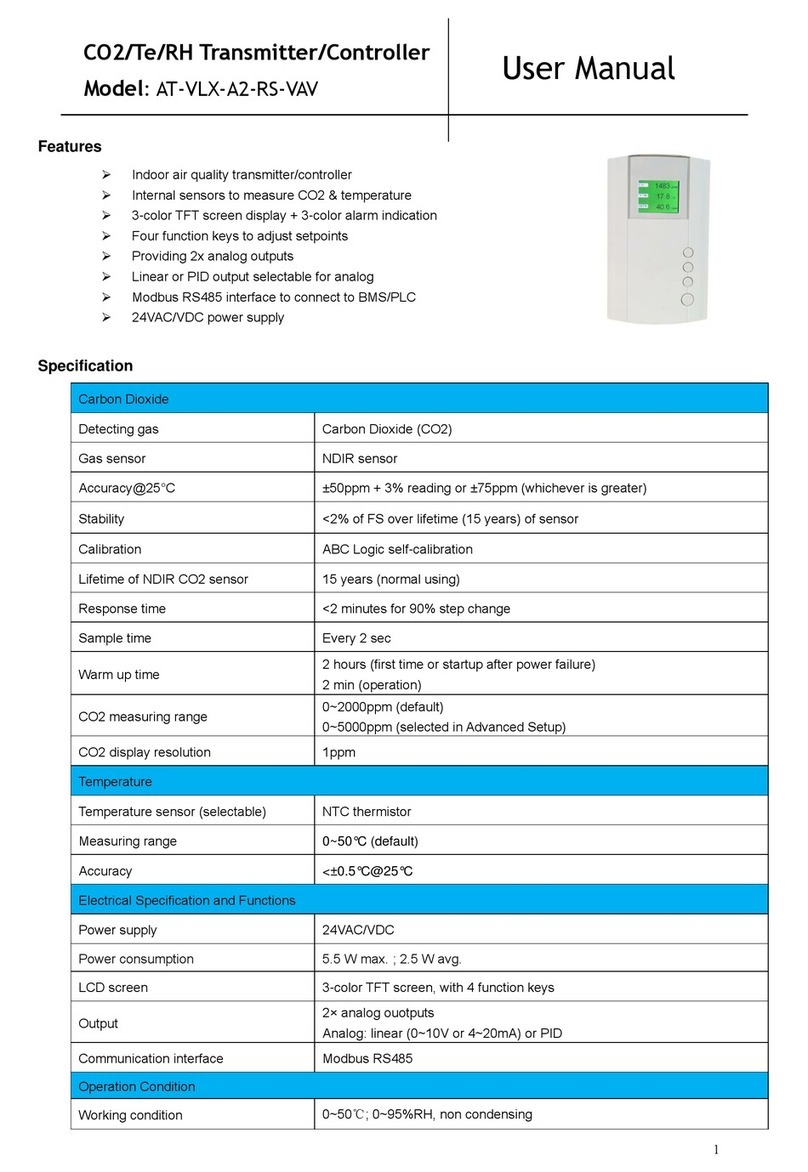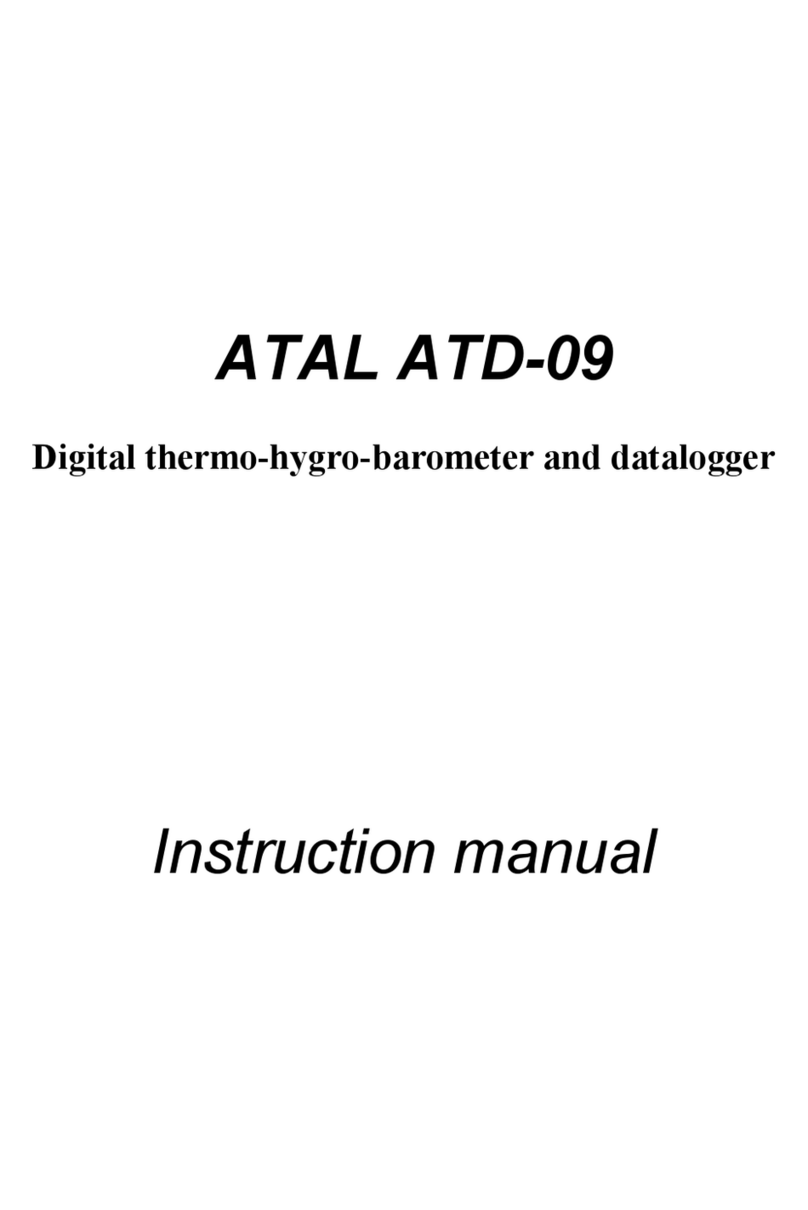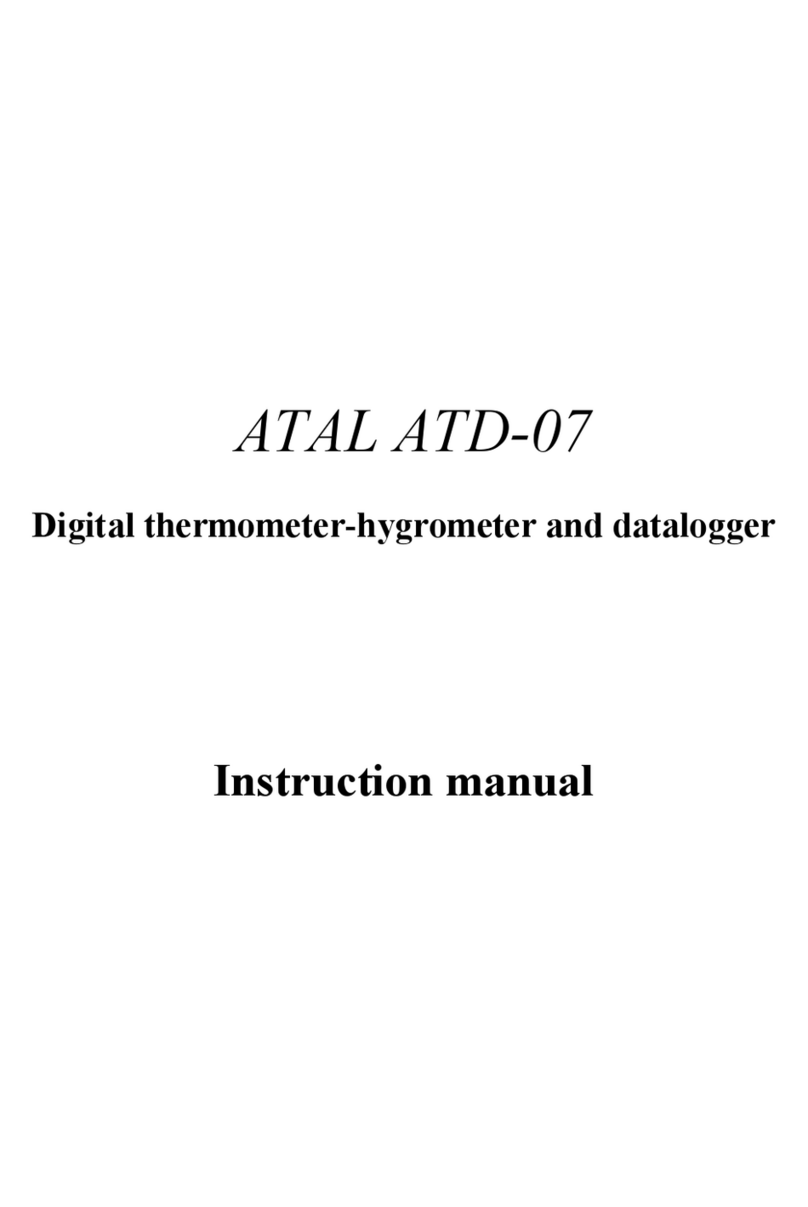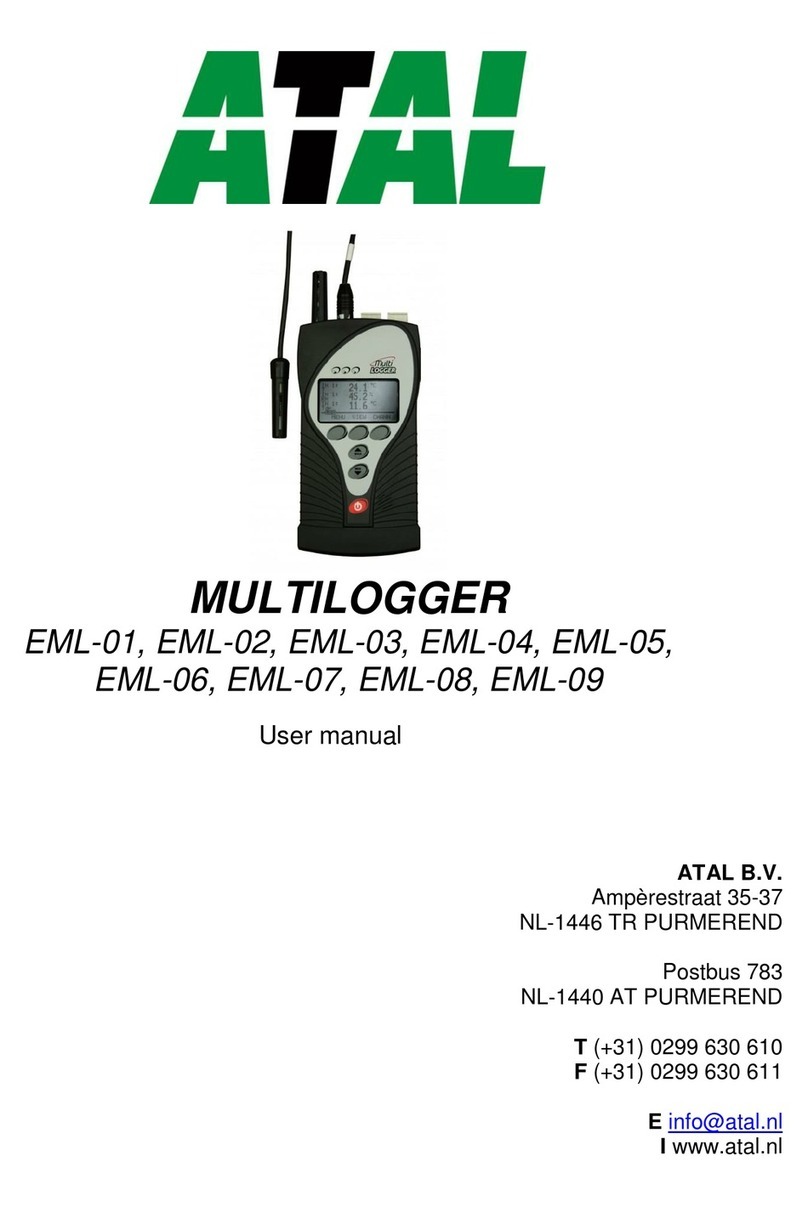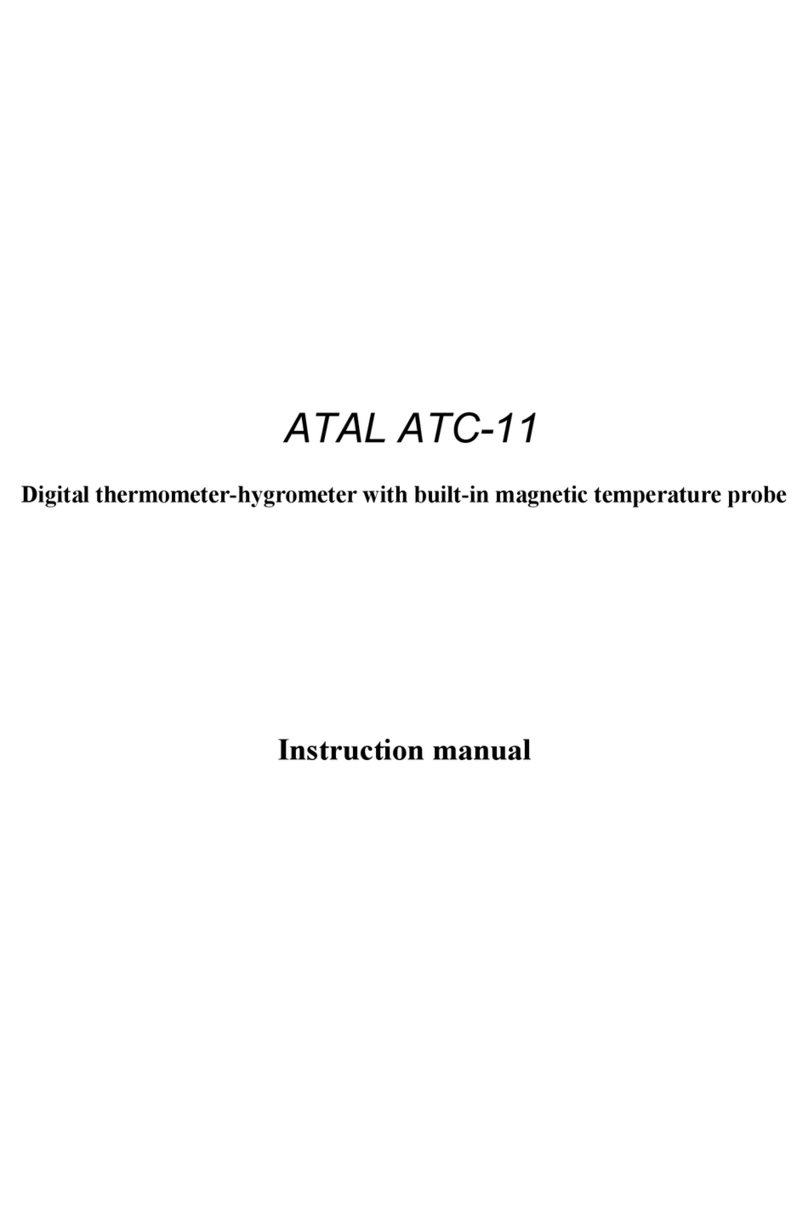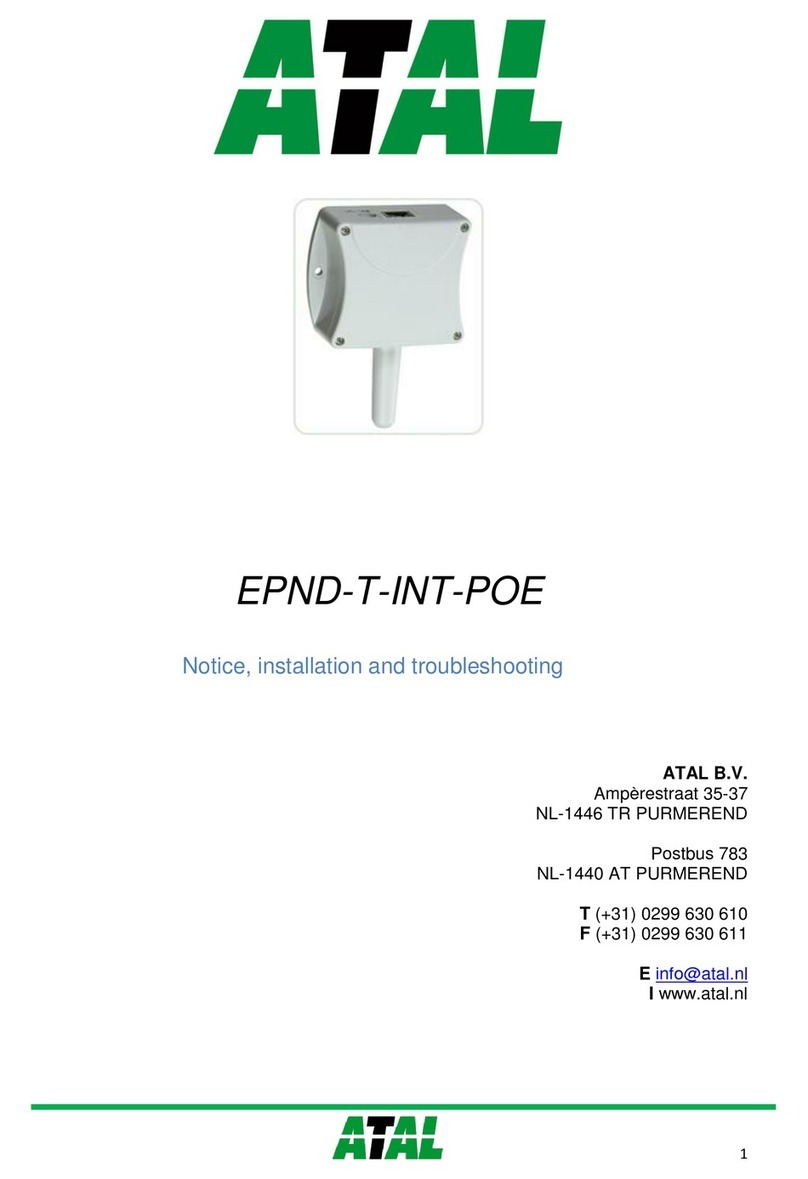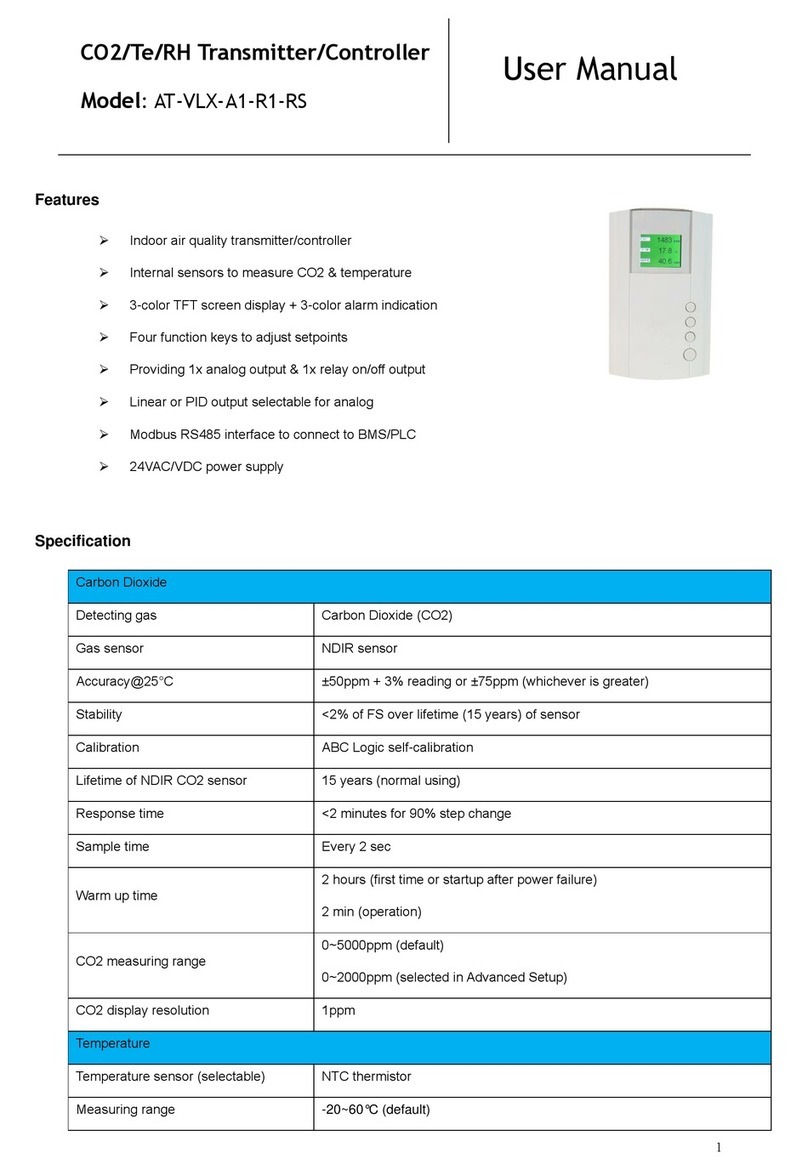
2IE-COM-ATD12-03
Instruction manual for use thermometer and datalogger ATAL ATD12
Instrument is designed for measurement and logging of temperature from one RTD Pt1000 or
Ni1000/6180ppm external probe. Measured values are displayed on a dual line LCD display and it
is possible to store values into the non volatile memory. Then it is possible to transfer data to a
personal computer. Instrument compares measured values of temperature with two adjustable
levels. Breaking the level is indicated by blinking the proper value on display and by audio
indication (switchable). Instrument is equipped with minimum and maximum memory and Hold
function. Minimum and maximum values and Hold value are possible to display on the LCD
anytime.
Technical parameters:
Parameters of measurement:
Accuracy (including probe with sensor Pt1000 with accuracy ±(0,15 + 0,002 x | t | )
):
± (0,45 + 0,004 x | t | ) °C from -100 to +500 °C
± 0,01 x | t | °C below -100 °C
Accuracy (including probe se sensor Ni1000/6180 s accuracy ±(0,15 + 0,002 x | t | ) ):
± 0,4 °C from -50 to +100 °C
± 0,5 % from reading from +100 to +250 °C
Accuracy of the input (without probe) set for sensor Pt1000/3850:
± 0,6 % from reading from -200 to -50 °C
± 0,3 °C from -50 to +100 °C
± 0,3 % from reading from +100 to +500 °C
Accuracy of the input (without probe) set for sensor Ni1000/6180:
± 0,2 °C from -50 to +100 °C
± 0,2 % from reading from +100 to +250 °C
Compatible temperature probe: with RTD Pt1000/3850ppm or Ni1000/6180ppm sensor with
the CINCH connector
Measuring interval and display reading refresh: approximately 0.7 s in FAST mode
0.7 to 5 s in dynamic mode
Interval of measurement and display refresh: approximately 0,7 s in FAST mode
0,7 to 5 s in dynamic mode
Logging interval (only in automatic logging mode): 10 s to 24 h
Memory capacity: for manual logging mode 1000 stored values
for automatic noncyclic logging mode 16248 values
for automatic cyclic logging mode 14400 values
The above specified numbers are maximum possible. Capacity is slightly lower if
logging was interrupted by communication with computer, by stopping logging or
switching OFF the instrument
Communication with computer: RS232 (serial port)
Real time clock: adjustable from computer, integrated calendar including leap years
Internal real time clock error: < 200 ppm (i.e. 0,02 %, 17,28 s in 24 h)
Power: battery 9V or ac/dc adapter 12V with NiCd accumulator 9V
Average current consumption: 0.08 to 0.3 mA (depending on operation mode)
Protection: IP20
Operation conditions:
Ambient temperature range: -30 to +65 °C
Ambient relative humidity range: 5 to 95 % RH, non condensing
Outer characteristics in accordance with EN 33-2000-3: normal environment with
characteristics AD1, AE1, AF1, AG1, AH1, AK1, AL1, AN1, AP1, AQ1, AR1, AS1, BA1,
BE1
Storing conditions: temperature -10 to +60 °C relative humidity 5 to 95 % RH












